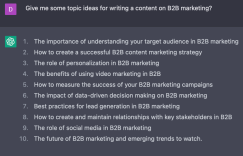This article will break down meta tags’ importance within the world of SEO. If you’re new to meta tags, and want some tips on writing an awesome meta description, make sure you check out this piece: What is a meta description?
For those of you who’d rather not click, and simply keep reading, here’s the TL;DR:
Definition: Meta Description
This term refers to one of many HTML tags which appears as a snippet on the SERP (search engine results page) and its goal is to give the reader, consumer or customer some context so as to what they’ll find on the web page.
Are meta descriptions important?
They’re helpful because many users will often read before clicking so as not to waste their time. Bounce rate and meta descriptions complement one another. How? When looking at a page of search results, your customer or reader will look at the meta description to get a preview of sorts.
If it matches their user intent, they click. If for some reason your description doesn’t match what’s on your page, your reader will probably leave as quickly as they came. Enter: bounce rate.
Bounce rate is not the same as the metric which tells you how long a user stays on your page. That said, it also varies depending on the type of content or service you provide.
I’m not suggesting that bounce rate become your main SEO focus by any means; search engines factor a variety of metrics into their ranking system.
It doesn’t make much sense for Google to punish sites too harshly for bounce rate since it varies so much depending on the sector.
For example, Wikipedia probably has an astronomical bounce rate because all the goods are on one page. That’s why they send you on fun loops with lots of internal links.
What’s the difference between a meta tag and a meta description?
Meta tags refer to a variety of HTML tags that Google reads and interprets such as a title tag or robots meta tag.
Whereas a meta description tag, on the other hand, gives the writer a bit more wiggle room to clarify what the reader will find upon clicking. It appears on the SERP and can be read by anyone who uses search engines like Google. You can write customized ones, or rely on the automatically generated ones by Google.








Social Media Meta Tags
Make sure your awesome content is easily able to be shared with this fun meta tag. If you use Yoast SEO plugin, you may already be familiar.
Basically Open Graph Tags (for Facebook, Linkedin and Google) and Twitter Cards allow your content to reach more people by making it shareable with a click of a button.